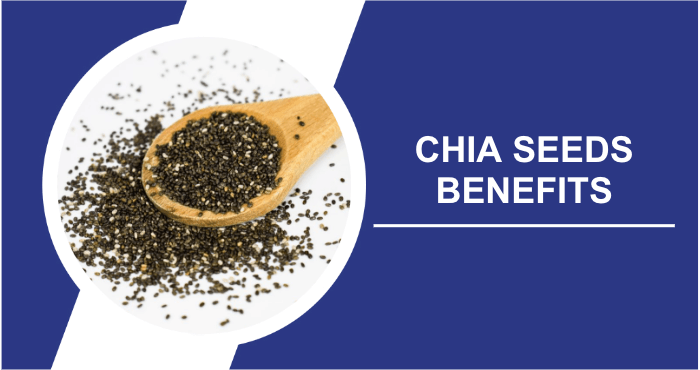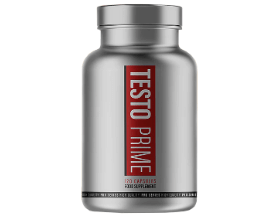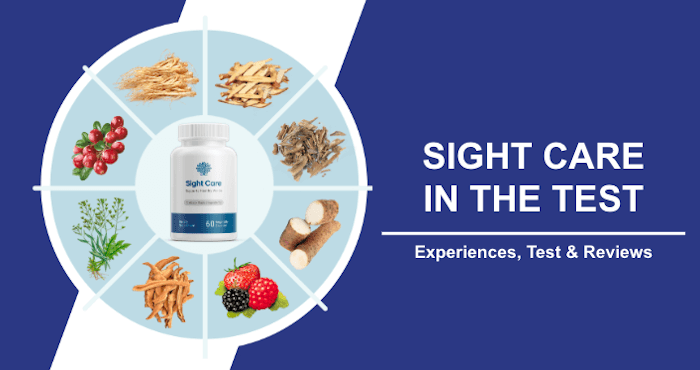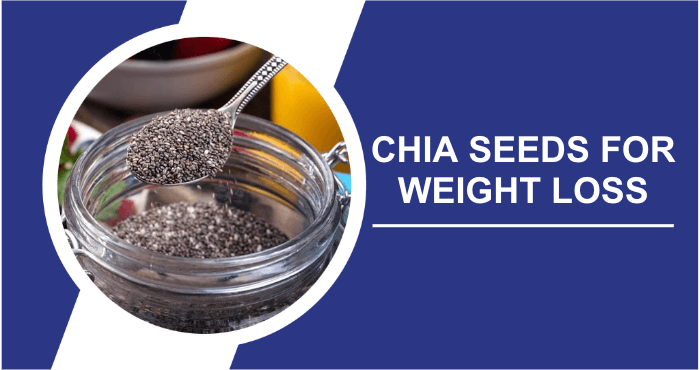Where do chia seeds come from?
Chia seeds, these tiny nutritional powerhouses, come from the plant Salvia hispanica, native to Central and South America. These ancient seeds were a staple of the Aztec and Mayan diets, prized for their energy-boosting properties. Today, chia seeds are celebrated around the world for their versatility in the kitchen and their impressive health benefits.
What are the reasons chia seeds are so healthy?
Chia seeds have earned their superfood status for several compelling reasons. First, they’re incredibly nutrient-dense, packing a punch of fiber, protein, omega-3 fatty acids, vitamins, and minerals into those tiny seeds. Second, they’re fantastic for digestion, thanks to their high soluble fiber content, which promotes a healthy gut.
Chia seeds are also known for their ability to stabilize blood sugar levels, making them a friend to diabetics. They’re also loaded with antioxidants, which fight free radicals and support overall wellness. Finally, chia seeds can absorb many times their weight in liquid, creating a satisfying gel-like texture that can help control appetite and keep you feeling fuller longer.
Health benefits of chia seeds

Numerous nutrients play a key role in maintaining a healthy weight, and adding these seeds to your diet is likely to have a positive impact on your digestive health, a critical component of weight management. Chia seeds are particularly high in fiber. Consuming fiber-rich foods can effectively slow down and improve the digestive process, facilitating the absorption of vital nutrients from your meals.
Fiber also helps maintain a robust gut microbiome, promotes a lasting sense of satiety, and helps curb overeating. For example, one study found that consuming 30 grams of fiber per day may contribute to weight loss. With 10 grams of fiber in a single ounce of chia seeds, they are a valuable addition to any meal or snack.
In addition, consuming chia seeds increases your protein intake, which provides sustained energy and reduces cravings because protein, like fiber, is digested slowly. Chia is one of the leading plant-based sources of protein, making it an excellent choice for those following a vegetarian diet.
These seeds also contain beneficial fats that can help reduce your waistline. The fatty acids they contain have the potential to alleviate symptoms associated with metabolic syndrome, which may help reduce abdominal fat. Including chia seeds in your diet can be a multifaceted approach to improving your digestive health and supporting your weight management goals.
Chia seed weight loss recipes
There are countless ways to incorporate chia seeds into your diet, providing a wealth of options to support your weight loss journey. This versatile, low-calorie superfood adds an element of indulgence to your pursuit of weight loss goals. You may notice that some chia seed bags come in a mix of colors.
Whether you choose white or black chia seeds, rest assured that they have identical flavor profiles and nutritional benefits. Incorporating chia seeds into your daily routine is a breeze, and there are a plethora of easy recipes for using chia seeds in your weight loss efforts. One such approach is to start your day with a revitalizing chia seed detox water for weight loss.
Chia seed water recipe
Ingredients:
- 1 1/2 cups water, either warm or cold
- One tablespoon chia seeds
- Fresh lemon or lime juice
- Optional: One teaspoon honey
Instructions:
- Combine the water and chia seeds in a suitable container.
- Squeeze in fresh lemon or lime juice to taste.
- Optionally, add a teaspoon of honey for a touch of sweetness.
- Blend thoroughly and allow to sit for 5-10 minutes.
- Enjoy this refreshing blend. This combination of lemon and chia seeds not only helps with weight loss, but also aids in detoxification and provides an energy boost.
Soaking chia seeds in water or another liquid enhances their nutritional value and ensures optimal absorption by breaking down any barriers to absorption. Incorporating this simple recipe into your routine can be a delicious and healthy way to enjoy the benefits of chia seeds for weight loss.
Chia egg (vegan egg substitute)
Another ingenious way to incorporate chia seeds into your culinary endeavors is to replace traditional eggs with a chia egg. This vegan egg alternative not only eliminates cholesterol, but also provides a valuable source of protein.
Ingredients:
- One tablespoon whole or ground chia seeds
- Three tablespoons water
Instructions:
- Combine one tablespoon of whole or ground chia seeds with three tablespoons of water in a mixing bowl.
- Stir thoroughly and let sit undisturbed for 5-10 minutes.
- Over time, you’ll see the mixture turn into a viscous, egg-like consistency that serves as an effective binder for dishes like pancakes and various other foods.
- Feel free to use this recipe as a substitute for any egg you wish to substitute in your recipes. If you have trouble watching your chia seeds absorb the water within a few minutes, this may indicate that your chia seeds are outdated or not fresh.
Chia seeds vanilla pudding recipe
Ingredients:
- 3/4 cup of unsweetened milk
- Three tablespoons of chia seeds One tablespoon of honey or maple syrup One teaspoon of pure vanilla extract
- Optional toppings: Nuts, berries, coconut flakes, and fruit
Instructions:
- In a mixing bowl, combine 3/4 cup of unsweetened milk, three tablespoons of chia seeds, one tablespoon of honey or maple syrup, and one teaspoon of pure vanilla extract.
- Stir the ingredients together until well blended.
- Allow the mixture to rest in the refrigerator for a minimum of a few hours or overnight. During this time, the chia seeds will absorb the liquid and create a delightful, pudding-like consistency.
- Once the chia pudding has set, feel free to garnish it with your choice of toppings, such as nuts, berries, coconut flakes, or fresh fruit.
- Enjoy your protein-packed dessert! This chia seed pudding can even be prepared in larger quantities and stored in the freezer for added convenience.
Indulge in the versatility of chia seed pudding by experimenting with various flavors to create a repertoire of protein-rich desserts at your fingertips.
Overnight oats with flax and chia seeds
To reap the weight loss benefits of chia and flax seeds, consider incorporating them into your diet through options such as overnight oatmeal or as an addition to your salad dressings and vegetable dips, all while keeping calorie intake in check.
Combining oats with chia and flax seeds can be a powerful weight management strategy. Both oats and chia seeds are rich sources of fiber, known for their cholesterol-lowering properties and their role in supporting a healthy weight.
Other health benefits of chia seeds
Chia seeds offer a variety of health benefits beyond their role in promoting weight loss. In terms of nutritional content, a single ounce of chia seeds, the equivalent of two tablespoons, contains only 138 calories and just 0.9 grams of saturated fat. They provide nearly 5 grams of protein, have no sugar, and contain zero cholesterol.
Chia seeds are a rich source of essential nutrients, including vitamin A, zinc, magnesium, phosphorus, and calcium, making them highly beneficial for maintaining healthy skin, bones, and teeth. The array of vitamins and minerals they provide support a variety of vital bodily functions. Incorporating these tiny seeds into a balanced diet can significantly improve gut health due to their high levels of antioxidants and fiber.
In addition, they promote the growth of beneficial gut bacteria, which strengthens the immune system. Chia seeds are also a source of omega-3 fatty acids, which have the potential to aid in weight management. These beneficial fats are also found in foods such as nut butter, coconut oil, and olive oil.
Omega-3 fatty acids have clear benefits for women’s health, potentially offering protection against breast and cervical cancer. They are also beneficial for men, reducing the risk of heart disease by increasing good cholesterol and decreasing bad cholesterol. A systematic review of chia seeds has shown their ability to lower blood pressure, contributing to heart health, and help control blood sugar levels, contributing to diabetes prevention.
Fascinatingly, the essential oils in chia seeds contain compounds that are believed to repel insects, leading to their use in omega-3 supplements. In addition, chia seeds have a high concentration of phytosterols, which have antimicrobial properties and may protect the heart and fight cancer.
Where can I find more delicious chia seed recipes?
To discover a treasure trove of delicious chia seed recipes, you can start your culinary adventure by exploring cookbooks dedicated to healthy eating and superfoods. Many food blogs and websites also feature creative chia seed concoctions, from chia pudding and smoothie bowls to savory dishes like chia crusted chicken.
Social media platforms like Instagram and Pinterest are buzzing with chia seed enthusiasts sharing their delicious creations and innovative twists on classic recipes. You can even join online forums or communities where food lovers share their favorite chia seed culinary secrets and trade tried-and-true recipes. The world of chia-based delights is vast and waiting to be explored!
Potential side effects of chia seeds
While chia seeds offer numerous health benefits, it’s important to note that these tiny seeds may have potential side effects for some individuals that warrant consideration:
Overconsumption
While chia seeds can aid in weight loss, overconsumption can potentially counteract your health goals. Moderation is key when incorporating chia seed pudding and chia seed water into your diet.
Interaction with medications
Individuals taking “blood thinners” or prescription medications that affect blood clotting should exercise caution with chia seeds. Due to their high omega-3 content, chia seeds may increase the anticoagulant effect of these medications.
Blood pressure
Chia seed’s ability to lower blood pressure may cause an additive effect in individuals already taking medication to control blood pressure. Monitoring is recommended in such cases. To rule out any negative consequences, consult a physician.
Gastrointestinal discomfort
Chia seeds are high in fiber, and excessive consumption without adequate water intake may irritate the gastrointestinal tract, potentially causing gas, bloating, diarrhea, or constipation. Individuals with inflammatory bowel disease or digestive problems should use caution.
Blood sugar levels
The fiber in chia seeds may lower blood sugar levels. If you have diabetes or are taking medication to regulate blood sugar, it’s important to monitor your intake and avoid overconsumption.
Swallowing hazards
Chia seeds have the ability to absorb liquid and swell significantly, increasing in size 10-27 times. If not properly soaked or mixed with food, they can pose a choking hazard by potentially causing a blockage in the esophagus.
Allergic reactions
Although rare, allergic reactions to chia seeds may occur. If you experience symptoms such as itching of the mouth, vomiting, or diarrhea after consumption, it may indicate an intolerance or allergy to chia seeds.
As with any dietary supplement, it’s wise to consult with a health care professional, especially if you have underlying health conditions or are taking medications, to ensure that incorporating chia seeds into your diet is consistent with your specific health needs and goals.
What are healthy alternatives to chia seeds?
If you’re looking for healthy alternatives to chia seeds, there are several options to consider. Flax seeds, which are rich in omega-3 fatty acids and fiber, can be ground and used in much the same way as chia seeds, especially in recipes like smoothies and baked goods. Hemp seeds offer a nutty flavor and are packed with protein and healthy fats, making them an excellent choice for salads and yogurt.
For thickening recipes, try psyllium husks, which are high in soluble fiber and aid in digestion. In addition, sesame seeds can add a delicious crunch and a dose of calcium to your dishes. These alternatives can provide a variety of health benefits and flavor profiles to suit your taste and dietary preferences.
Conclusion
Incorporating chia seeds into your diet can help you feel fuller, support your weight loss efforts, and address a variety of health concerns. This heart-healthy superfood is readily available, whether you buy it in bulk online or find it at your local grocery store.
If the taste of chia seed water doesn’t appeal to you, rest assured that chia seeds are versatile and can be seamlessly incorporated into virtually any meal of the day. It’s important to ensure adequate fluid intake to facilitate the smooth passage of this high-fiber food through your digestive system.
Frequently asked questions
Can chia seeds be used as a meal replacement for weight loss?
Chia seeds offer nutritional benefits, but should not be used to replace meals for sustained weight loss. They are best used as a valuable addition to a balanced diet.
Can excessive chia seed consumption lead to weight gain?
Yes, overconsumption of chia seeds can lead to an increased caloric intake, which may result in unintended weight gain. It’s important to practice moderation.
Does chia seed interact with blood pressure medications?
Chia seeds can lower blood pressure. If you’re taking medication for high blood pressure, it’s a good idea to monitor your chia seed intake to avoid an excessive drop in blood pressure.
How can I effectively incorporate chia seeds into a weight loss diet?
Incorporate chia seeds into your weight loss diet by mixing them into smoothies, yogurt, oatmeal, or using them as a salad topping. Pair them with other nutritious foods for a well-rounded approach to weight loss.
Can chia seeds help reduce cravings and prevent overeating?
Chia seeds have the potential to provide a sense of satiety due to their fiber and protein content, which can help reduce cravings and prevent overeating when incorporated into a balanced diet.
Resources
- Ma, Y., Olendzki, B.C., Wang, J., Gioia Persuitte, Li, W.-J., Fang, H., Merriam, P.A., Wedick, N.M., Ockene, I.S., Culver, A.L., Schneider, K.L., Gin-Fei Olendzki, Carmody, J., Ge, T., Zhang, Z., and Pagoto, S.L. (2015). Single-Component Versus Multicomponent Dietary Goals for the Metabolic Syndrome. [online] 162(4), pp.248–257. Read article.
- Kembra Albracht-Schulte, Kalupahana, N.S., Ramalingam, L., Wang, S., Rahman, S.M., Robert-McComb, J.J., and Naima Moustaid-Moussa (2018). Omega-3 fatty acids in obesity and metabolic syndrome: a mechanistic update. [online] 58, pp.1–16. Read article.
- Usda.gov. (2023). FoodData Central. [online] Read article.
- Buckley, J.D. and Peter (2010). Long-Chain Omega-3 Polyunsaturated Fatty Acids May Be Beneficial for Reducing Obesity—A Review. [online] 2(12), pp.1212–1230. Read article.
- Sun, H., Hu, Y., Gu, Z., Owens, R.T., Chen, Y., and Edwards, I.J. (2011). Omega-3 fatty acids induce apoptosis in human breast cancer cells and mouse mammary tissue through syndecan-1 inhibition of the MEK-Erk pathway. [online] 32(10), pp.1518–1524. Read article.
- Jain (2015). Omega-3 fatty acids and cardiovascular disease. European review for medical and pharmacological sciences, [online] 19(3). Read article.
- Siew Hong Teoh, Nai Ming Lai, Possatorn Vanichkulpitak, Vladimir Vuksan, Hoang Nam Ho, and Nathorn Chaiyakunapruk (2018). Clinical evidence on dietary supplementation with chia seed (Salvia hispanica L.): a systematic review and meta-analysis. [online] 76(4), pp.219–242. Read article.
- Ullah, R., Nadeem, M., Khalique, A., Imran, M., Mehmood, S., Javid, A., and Hussain, J. (2015). Nutritional and therapeutic perspectives of Chia (Salvia hispanica L.): a review. [online] 53(4), pp.1750–1758. Read article.
- Zuzana Burčová, Kreps, F., Mária Greifová, Jablonský, M., Aleš Ház, Schmidt, Š., and Igor Šurina (2018). Antibacterial and antifungal activity of phytosterols and methyl dehydroabietate of Norway spruce bark extracts. [online] 282, pp.18–24. Read article.
- Feng, S., Tarun Belwal, Li, L., Jarukitt Limwachiranon, Liu, X., and Luo, Z. (2020). Phytosterols and their derivatives: Potential health‐promoting uses against lipid metabolism and associated diseases, mechanism, and safety issues. [online] 19(4), pp.1243–1267. Read article.





























 CBD gummies are popular for enhancing sleep quality because they are incredibly convenient. Their portability makes them a great option, for travel unlike CBD oil containers.
CBD gummies are popular for enhancing sleep quality because they are incredibly convenient. Their portability makes them a great option, for travel unlike CBD oil containers. Apart from enhancing the quality of sleep CBD gummies also provide benefits and can potentially have a positive influence, on various health conditions. Now lets explore some of these advantages.
Apart from enhancing the quality of sleep CBD gummies also provide benefits and can potentially have a positive influence, on various health conditions. Now lets explore some of these advantages.













